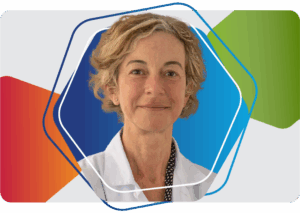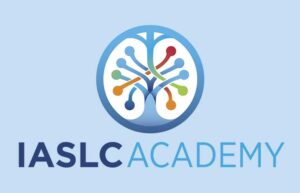Lynn Lieberman’s world changed dramatically after receiving her lung cancer diagnosis in 2024. She spent much of that year managing treatment and appointments and was scheduled to undergo an infusion at Cedars-Sinai Medical Center in Los Angeles on January 7, 2025.
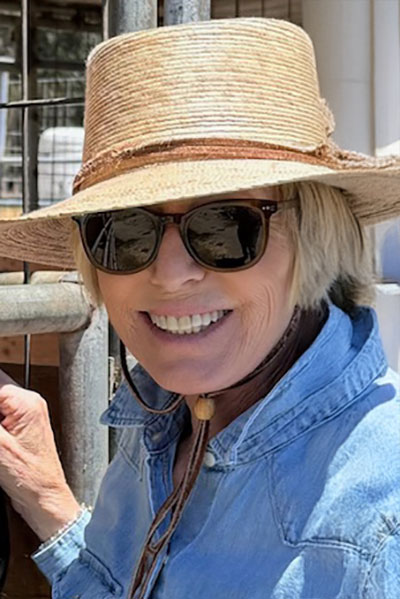
When she set out for treatment that morning, she had no idea that her home would be one of the more than 6,800 structures lost to the Palisades Wildfire in Southern California.
As Ms. Lieberman and her husband prepared to leave for her appointment, flames were visible outside their window. Intense winds had pushed the devastating wildfires across their Pacific Palisades community.
“We pulled both cars out and packed up a few things; we knew we were coming back. Why wouldn’t we?” Ms. Lieberman said. “I grabbed nothing. I had a book of the treatments and how I felt. I was tracking everything during that time, but I took nothing. I didn’t even think about it.”
Mandatory evacuation orders were issued as they drove to her appointment. The chaos had already begun though, turning a typical 45-minute trip into a two-hour drive.
Unable to return home after her appointment, Ms. Lieberman and her husband checked into a nearby hotel.
“Every single person checking in had evacuated from that particular area,” Ms. Lieberman said. “It was a very strange feeling because everybody was there with their dogs and maybe a suitcase or a tote.”
The next morning, an alert from their security system confirmed that the fire had reached their house, and they knew it was gone. When they were finally able to return to the site, they were shocked. Everything was gone except the frame of a Peloton that was once in Ms. Lieberman’s home Pilates studio.
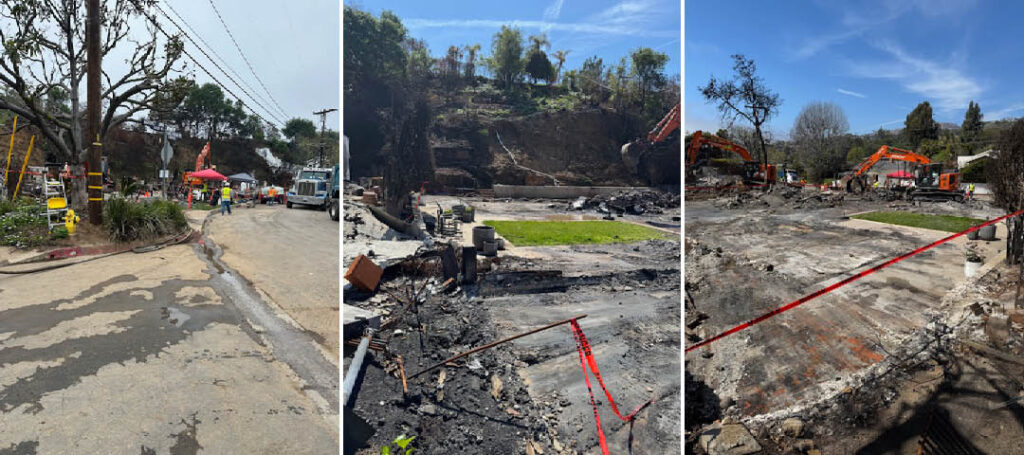
“It’s challenging when you lose everything,” she said. “I mean, we’re not kids. We had albums and family photos. You don’t even know what you don’t have until you go to reach for it. That’s the difficult part now.”
In the days that followed, Ms. Lieberman and her husband navigated the process of coping with their loss while continuing treatment and facing exposure to harmful pollutants in the air from the wildfire smoke.
She said she was fortunate to experience minimal disruptions in her treatment; however, she acknowledges that her situation wasn’t universal. Many clinics and hospitals in heavily affected areas had to close temporarily.
“There were a lot of doctors that were affected, whether at Cedars or St. John’s in Santa Monica,” Ms. Lieberman said. “They were juggling appointments, but it did not impact my appointments. They may have changed by a day or two, but I still had them.”
Karen Reckamp, MD, MS, says that the clinical and social work teams at Cedars-Sinai mobilized to reach out to patients and maintain continuity of care during the wildfires. Dr. Reckamp recently shared her perspective in an ILCN article on the impact of wildfires on cancer care.
A 2023 study revealed that 100% of radiation oncology clinics in California were located within 25 miles of a wildfire in the past five years, underscoring the widespread risk that wildfires pose to patients relying on ongoing treatment.1 Additionally, 53% of patients experienced appointment delays or cancellations during wildfires, while 33% lost communication with their care teams during the crisis.1
For Ms. Lieberman, the most significant challenge was transportation, particularly in timing appointments around traffic and road closures caused by wildfire damage.
Transportation disruptions are a common barrier to care encountered by patients during climate-related disasters such as this. In fact, 43% of patients in California reported transportation issues during wildfires between 2017 and 2022.1
Another adverse consequence of climate-related disasters on patients undergoing treatment is exposure to wildfire smoke. And even though Ms. Lieberman’s medical care stayed on track, exposure to wildfire smoke took a toll on her health.
The air quality was so poor that she could not go outside without a mask, even by the coast.
“We moved to Marina del Rey, thinking it would be better near the ocean, but our doctor said, ‘You need to get out of here,’” she said.
But the hazardous air was inescapable throughout the LA area, so they temporarily relocated to Northern California before returning to Los Angeles for treatment.
The emotional toll was just as heavy as the physical, from the stress of treatment and the uncertainty surrounding the fires to the challenge of finding housing.
“We are on a roller coaster. And you just have moments where you are in complete disbelief,” Ms. Lieberman said. “We were in disbelief from the diagnosis, and then you get this. And it’s just like, how? How did this happen, or why?”
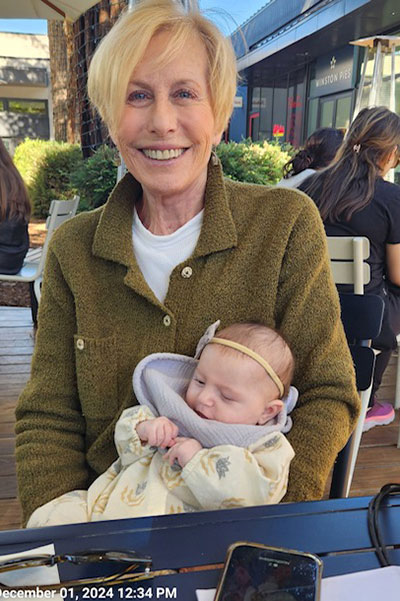
Even amid the uncertainty, she continues to face the challenges with optimism, resiliency, and gratitude for the support system that has helped her get through this.
“We take it as it comes, and it could be moments, hours,” she said. “We have a fabulous family, and we try to just be a part of their lives. And we have wonderful friends,” she said. “It’s just a puzzle, and we’re just trying to put the pieces together.”
Ms. Lieberman’s experience is also a stark reminder that patients and healthcare systems are increasingly vulnerable to the effects of climate-related disasters. The Southern California wildfires have revealed an urgent need to invest in climate-adaptive health systems.
References
- 1. Lichter KE, Baniel CC, Do I, Medhat Y, Avula V, Nogueira LM, Bates JE, Paulsson A, Malik N, Hiatt RA, Yom SS, Mohamad O. Effects of Wildfire Events on California Radiation Oncology Clinics and Patients. Adv Radiat Oncol. 2023 Oct 22;9(3):101395. doi: 10.1016/j.adro.2023.101395. PMID: 38304108; PMCID: PMC10831805.
Related Articles
- Healthcare Community Can Still Take Action to Combat Effects of Climate Change
- Picking Up the Pieces: The Impact of the Western US Wildfires on Cancer Care
- Where There’s Smoke: The Global Threat of Lung Cancer in Patients with No Smoking History and its Implications in Screening
- Climate Change Increasingly Exposes Communities, Healthcare Systems to Unpredictable Circumstances
Behind the Story: About Lynn Lieberman
Lynn Lieberman is 72 years old and currently lives in Southern California, not far from her home in the Palisades. She graduated from UCLA and worked in merchandising for 45 years, specifically in housewares, gifts, and home furnishings.
Before receiving her diagnosis in May 2024, she volunteered at Camp Ronald McDonald for Good Times and the Getty Museum. She was a Pilates instructor at her home gym before the January 2025 wildfires and participated in outdoor cycling.








